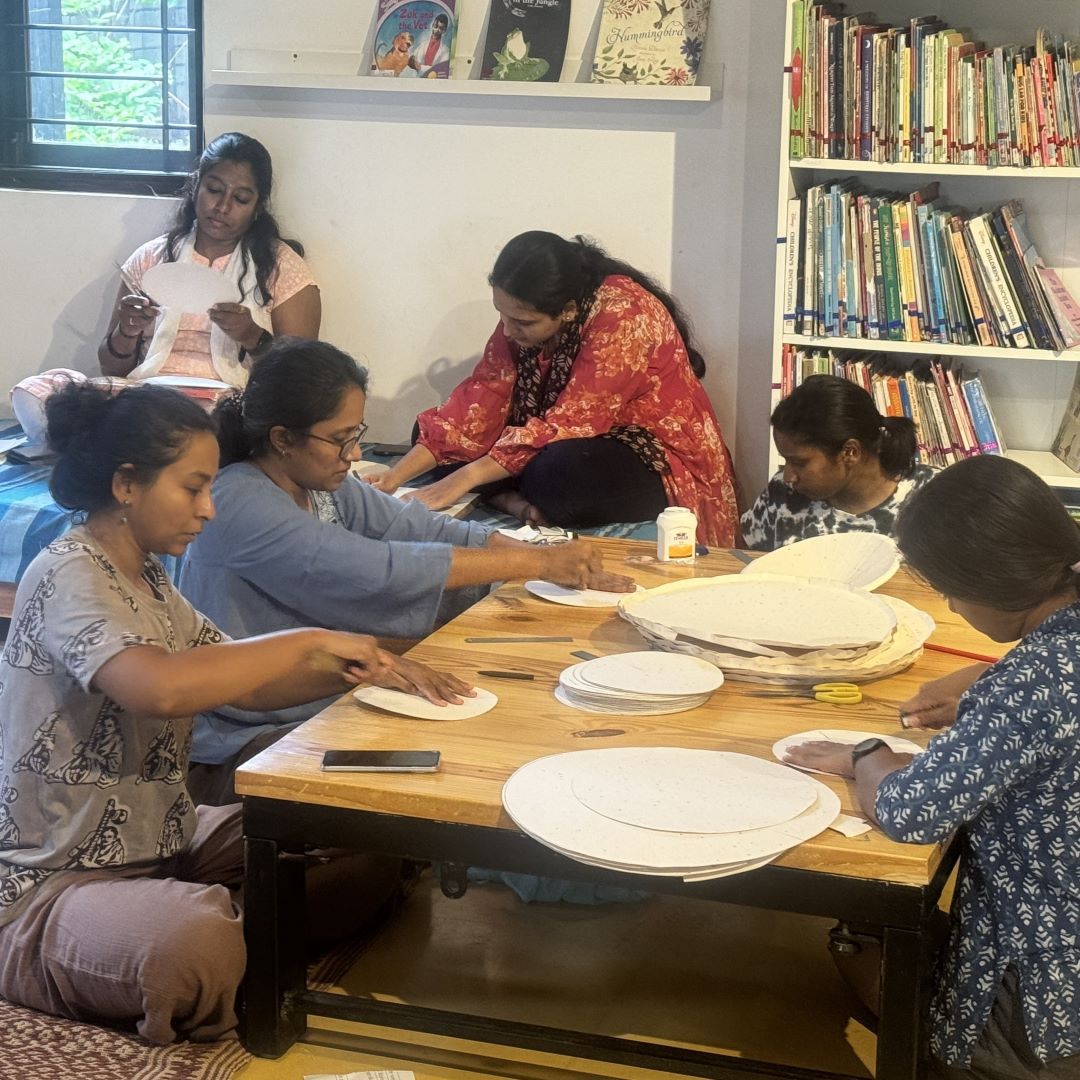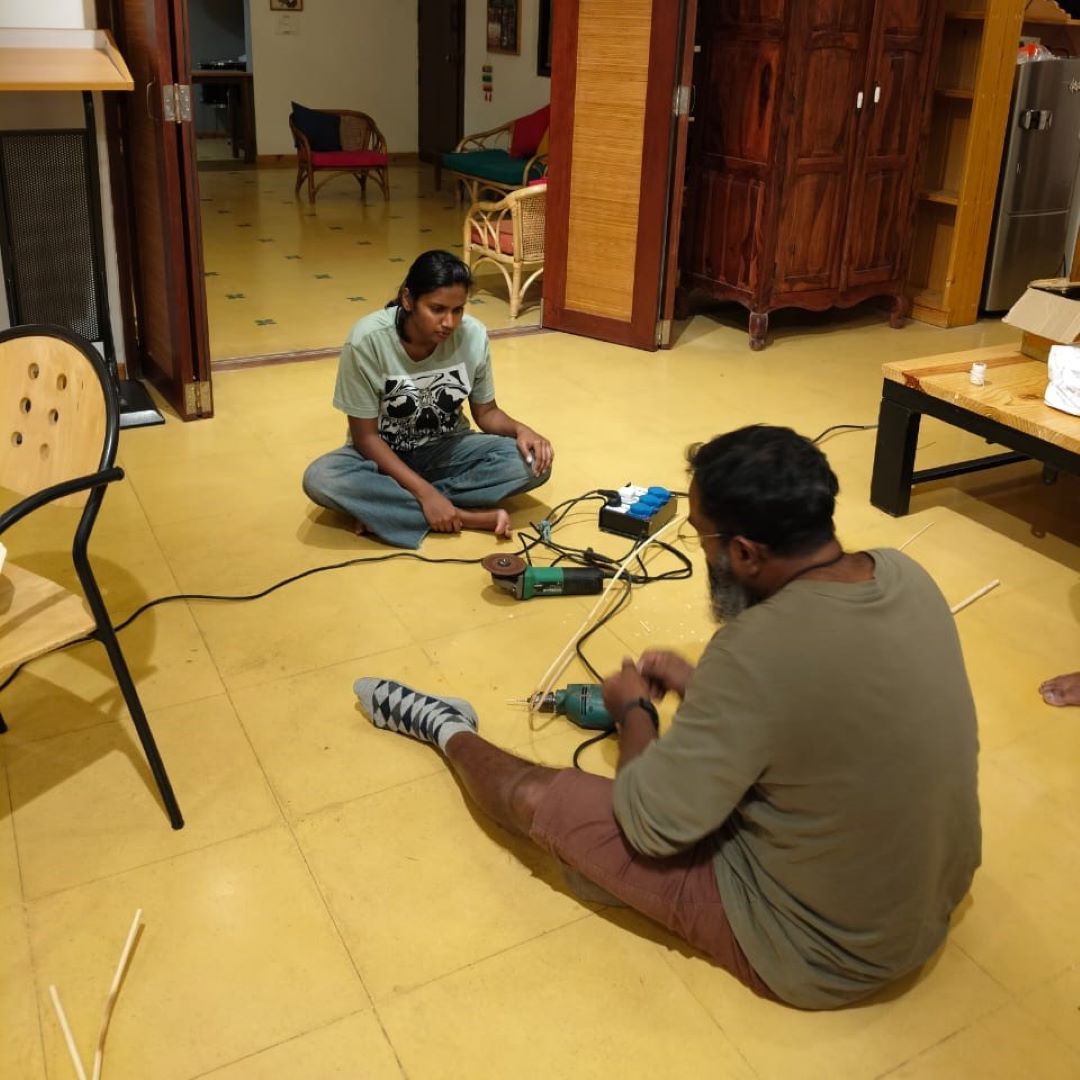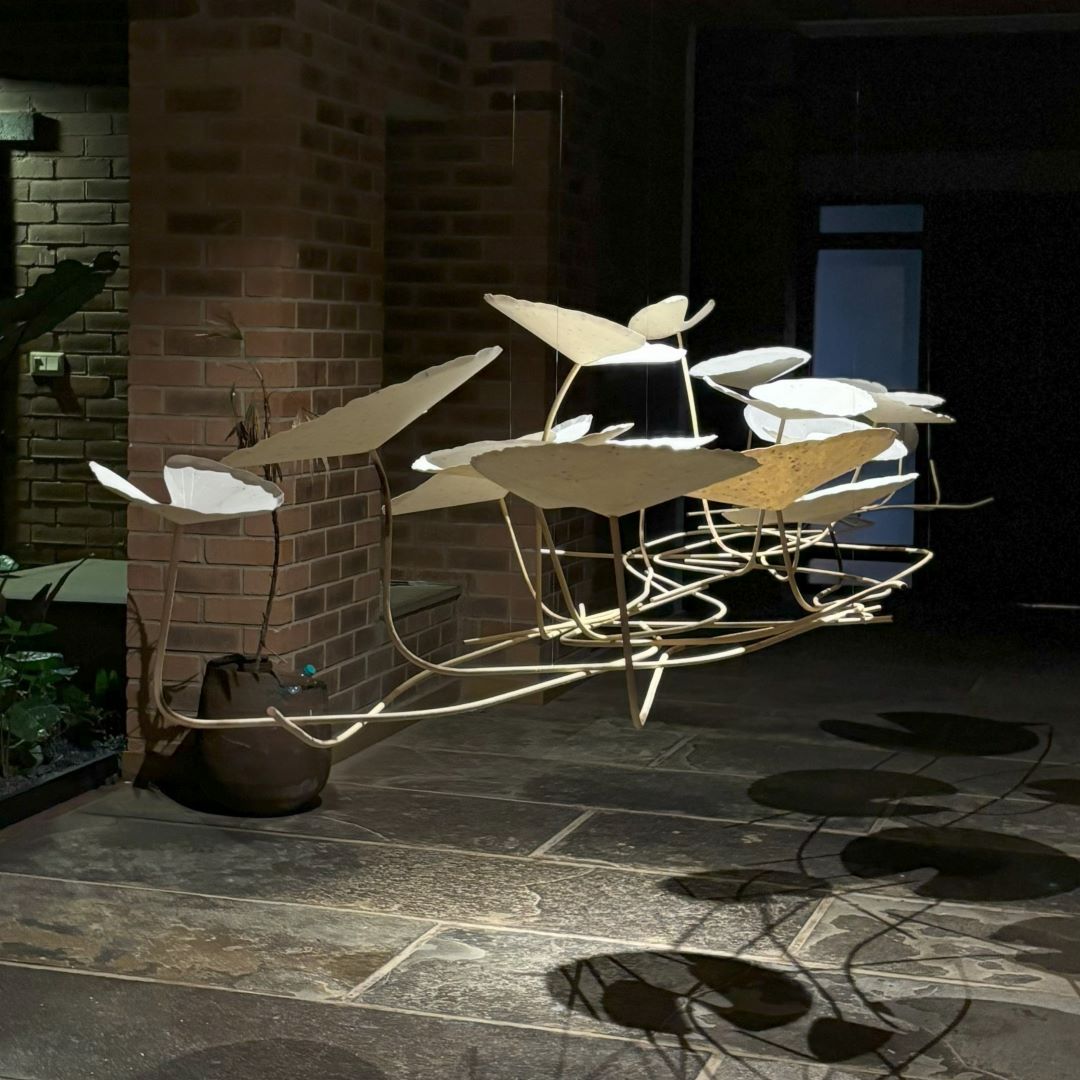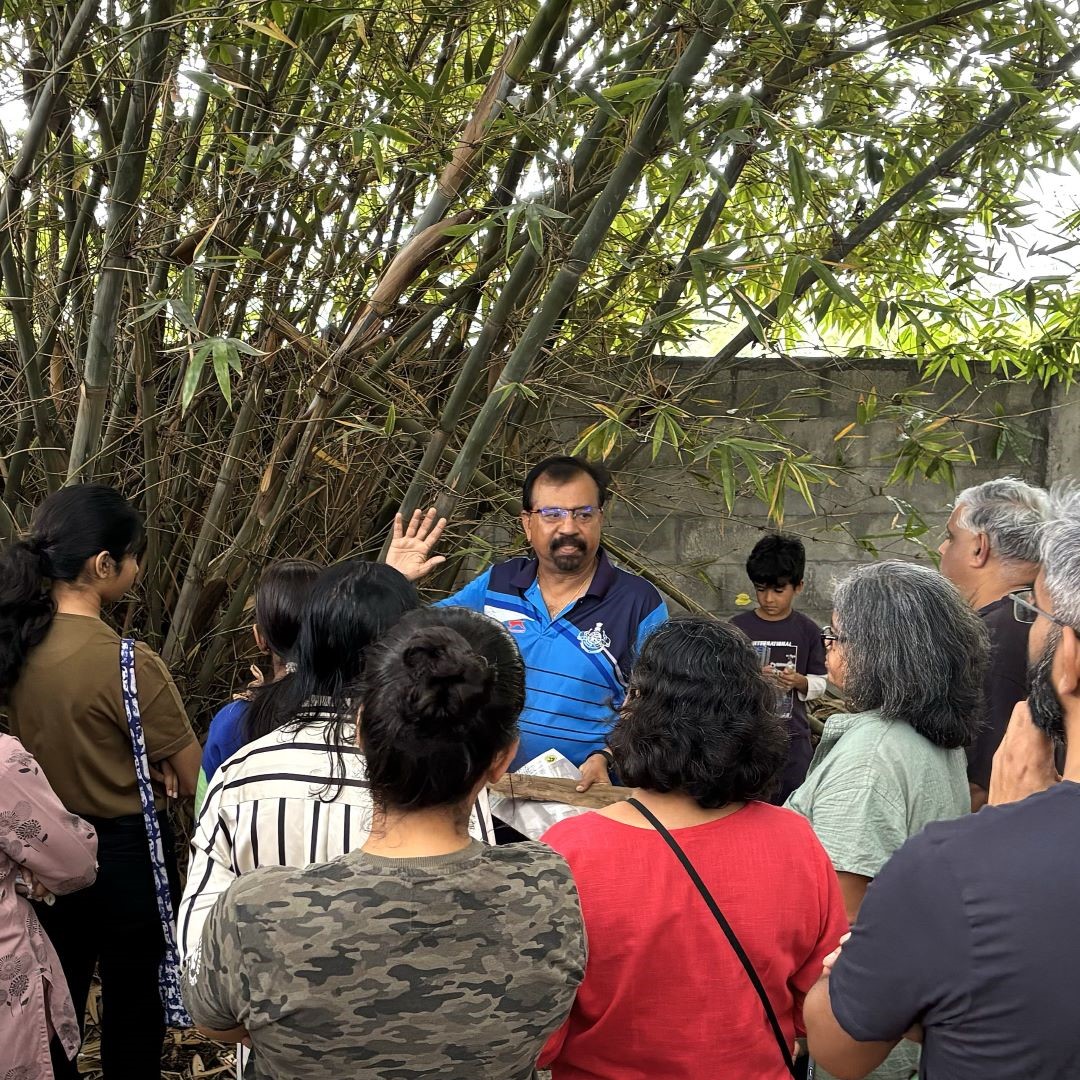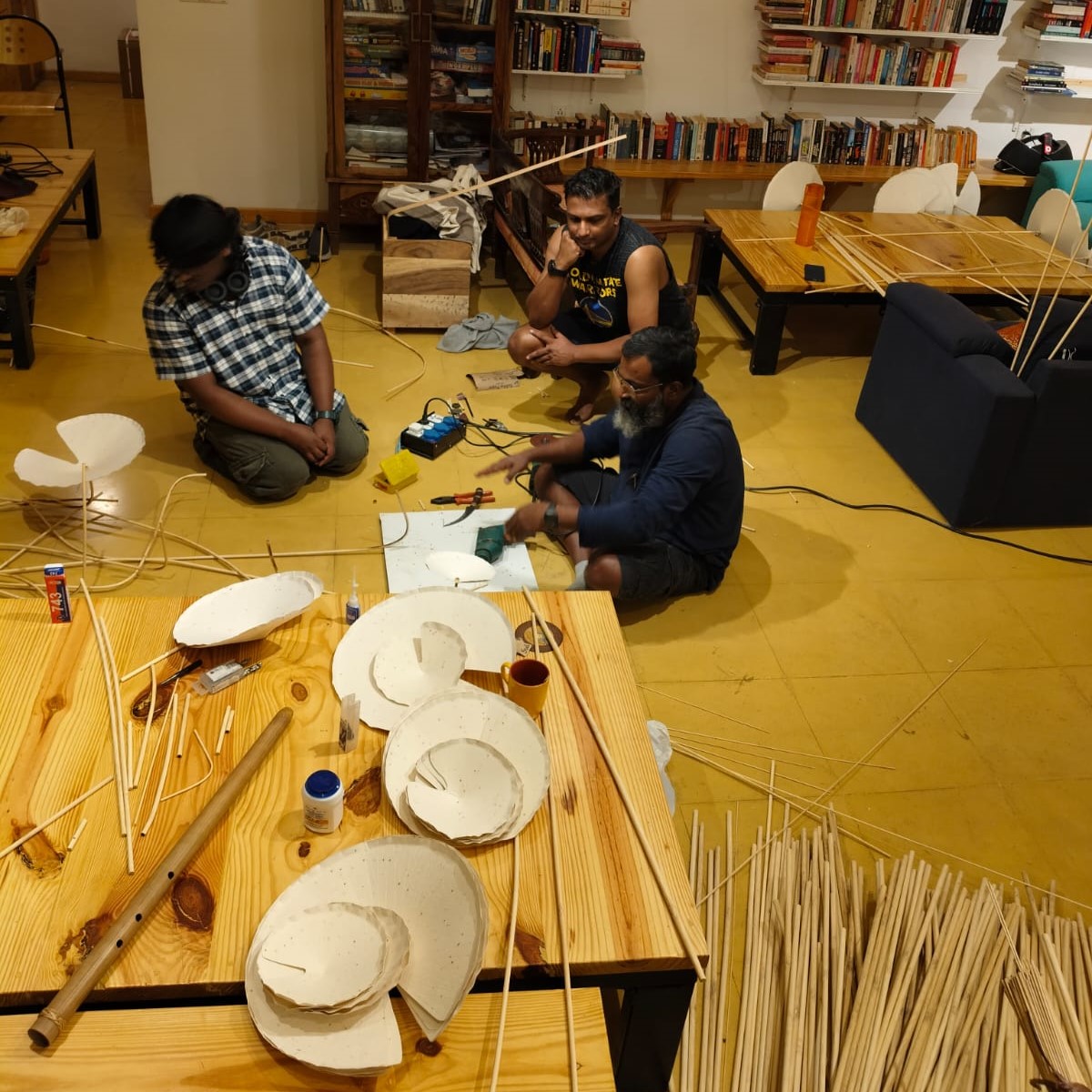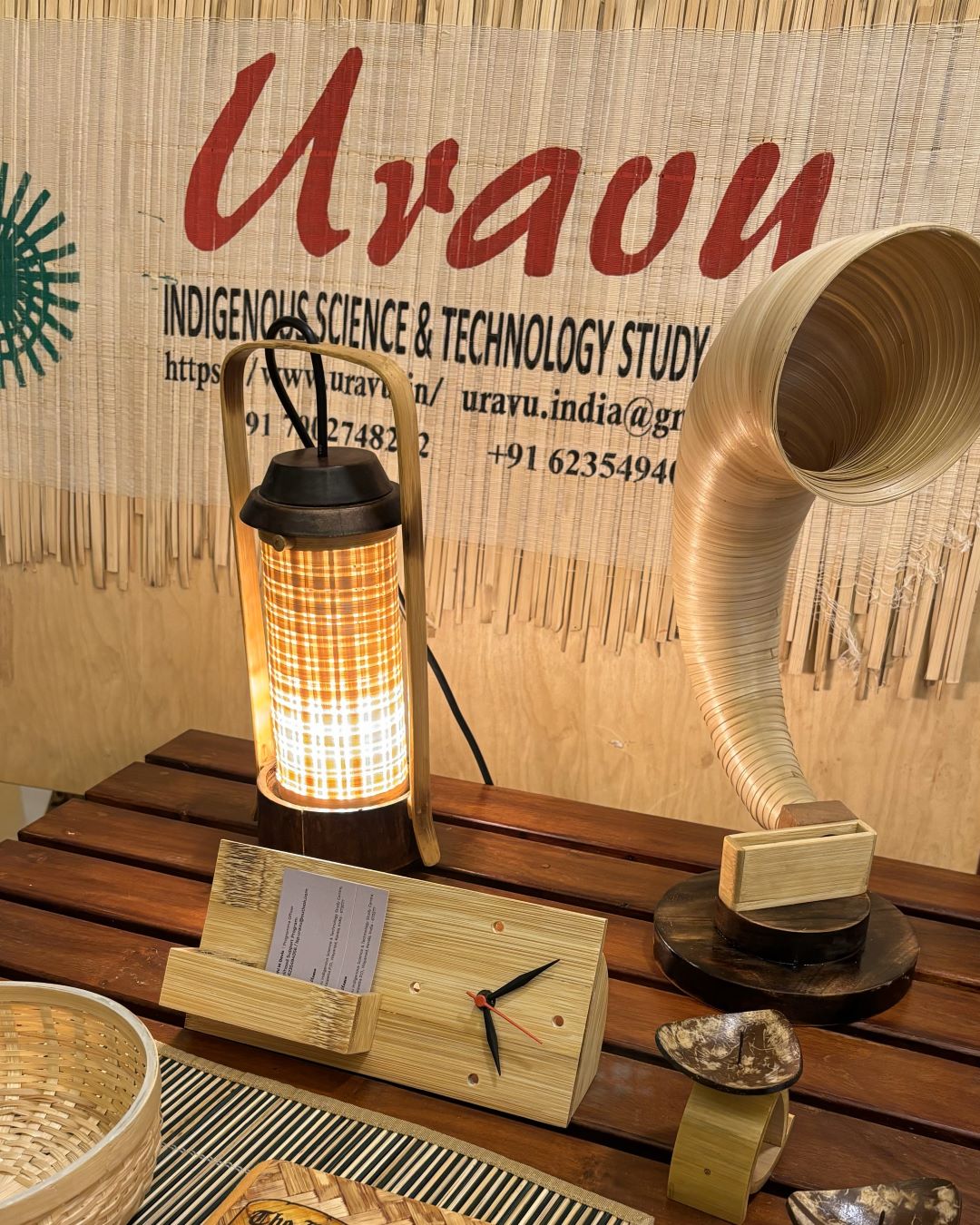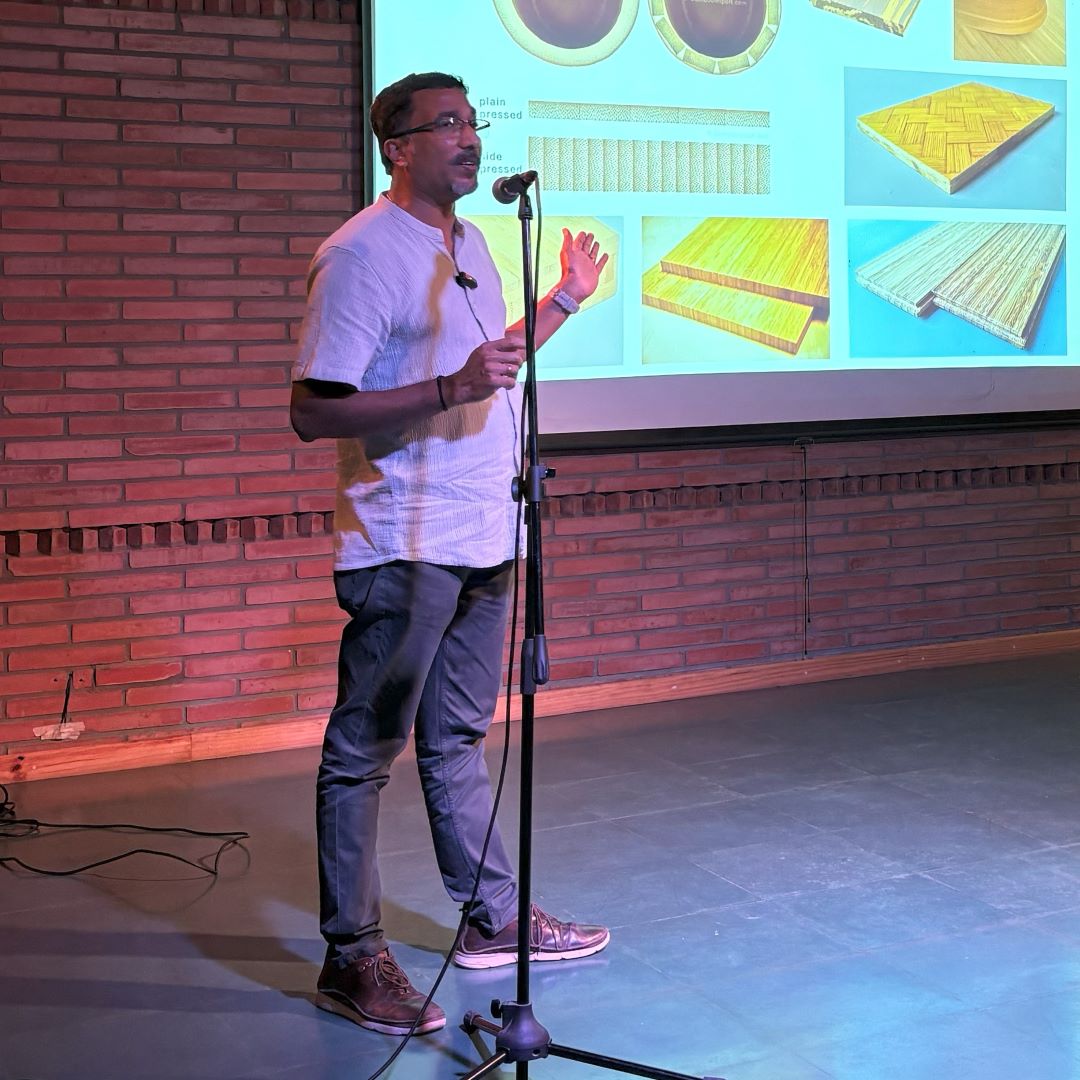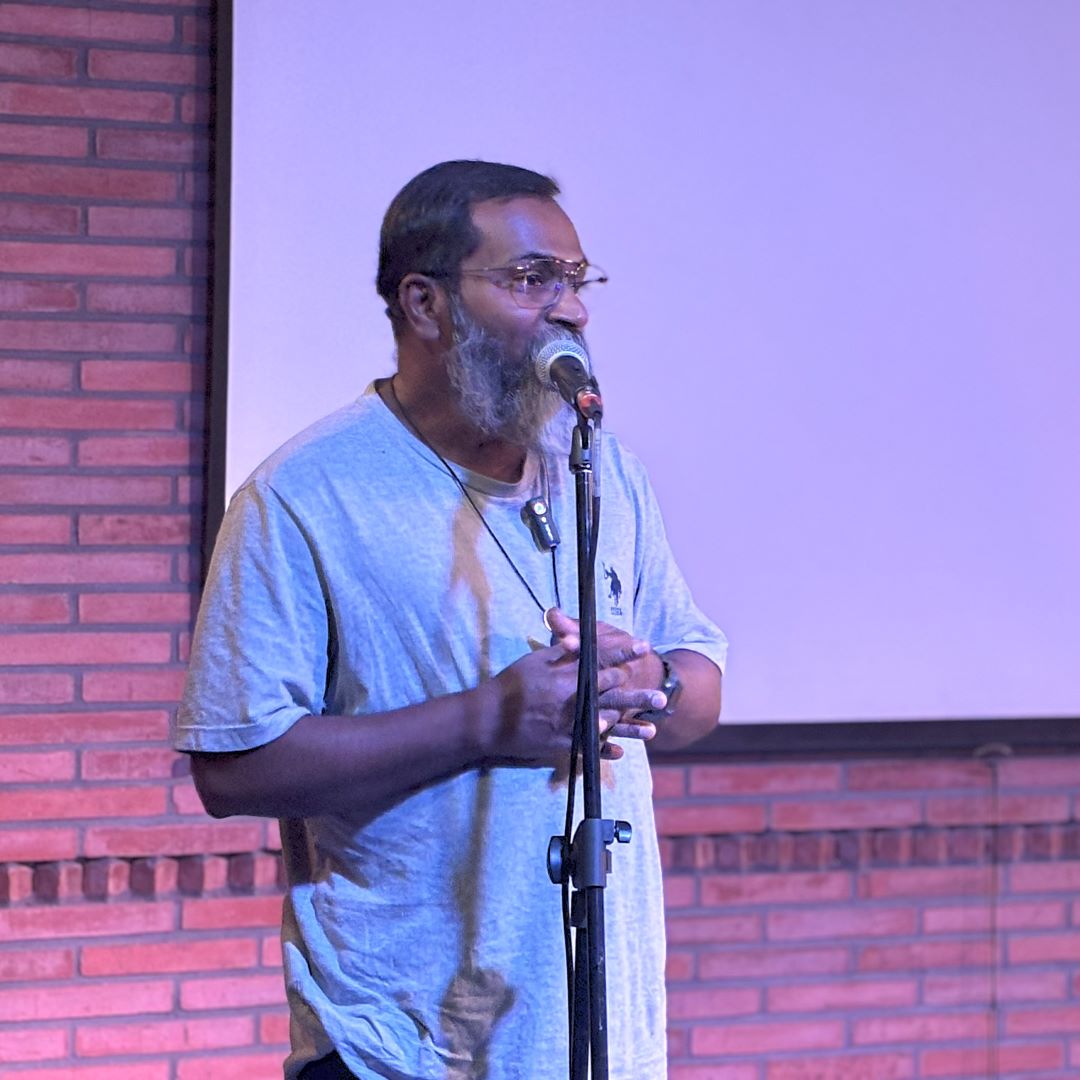Material, Muse, and Metaphor
Bamboo Groove : Material, Muse, and Metaphor
When you think ‘grass’, you never think of bamboo. You can use it to build houses, as they do in South Asia, South-East Asia, and East Asia. You can bend it and make baskets, tables, and even walls. Fermented bamboo shoot is delicious; ask those who live around the Himalayas. Folks keen on greening our planet, love it.
What then is bamboo? Is it a grass? Construction material? Food? Afforestation favourite? Aesthetic choice? Livelihood?
Perhaps, the bamboo signifies the journey of our lives. An artist described the journey thus: the shell of the bamboo is hard. As you shave away the surface, you get to softness, rich in vascular bundles. And as you pare away all that, you get the hollow at the core of it all, the emptiness.


At Courtyard Koota, the many meanings of bamboo became a fertile ground to explore the intersection of art, craft, environmental issues, economics, and all the other complexities of this world we share.
Fueled by the spirit of curiosity, creativity, and collaboration, we explored this chimera that is bamboo through arts, crafts, food, and community at our festival of bamboo.
Many thanks to the Samagata Foundation for supporting this initiative.
The Program

Being Light : Art Installation with Rajeev Wind
Rajeev Wind is an artist working with many materials, bamboo being one of them. His work involves creating new expressions in bamboo. We asked him — can we take a new look at bamboo to conceive a new aesthetic in a way that conveys the wondrous possibilities the material offers?
Rajeev eschews evangelism of any kind; the only thing that he believes is that context matters. Fresh from his work with Bamboostan in Assam, he brought machine cut sections of bamboo. Paper was the other material in his sandbox. After searching stationery centres in the city, we finally found a handmade paper factory in the neighbourhood. We procured handmade paper from there with basil seeds made of waste cloth to play with the bamboo.

A team of volunteers and art students worked together to create components for the installation, directed by Rajeev.
A spirit of lightness entered Koota, with music, laughter and sharing interspersed with parts of the whole that was to come.
Four days of intense engagement, days that began with Rajeev playing the nose flute, card tricks by Sandeep and endless cups of tea and coffee from Khushi.
Curious to know more… here are some links for your exploration.
Rajeev Wind
Work
Mint Lounge
Homegrown
Bamboo Sahi Hai
Other Bamboo artists
Sandeep Sangaru
Thumb Impressions
Studio Aro
Stories from the process
An Art Students experience of working on the installation
Starting the day with the Nose Flute
Exhibition : Design, Processes, Products
To showcase how bamboo is used and interpreted, we invited three groups representing different approaches and stages in developing bamboo as a craft.
The Centre for Bamboo Initiatives from NID is a platform for faculty members, students and designers for innovation, experimentation and building new resources for the bamboo sector in India and abroad.
Their products, such as the bamboo partition, caught the attention of many of the visitors, with the children trying out the tricycles and the rocking horse.

Kannadipaaya :
‘Kannadipaya’ is a specially woven bamboo mirror mat, known for its unique design, light refractive properties, and extreme flexibility. It is traditionally made by the Urali, Mannan, and Muthuvan tribal communities of Idukki district, Kerala, using the locally available bamboo species.
The weaving of ‘Kannadipaya’ is an ancient skill passed down through generations. The mats are considered unique heritage products and traditional handicrafts. They await a GI-tag. A group of people, three men and two women, from Idukki district, visited us. They demonstrated how they made the mat and put up some of their products on sale.
Uravu :
Established in 1996, Uravu Indigenous Science & Technology Study Centre commonly known as Uravu is a not-for-profit bamboo based developmental organisation that strives for rural empowerment through sustainable solutions. They setup a stall for products, such as lamps, amplifiers, and blinds, designed and developed by them.
Curious to know more…here are some links for your exploration.
Talk : Unleashing Bamboo – Possibilities and Challenges

Moderated by Benson Isaac, we had three panellists: Syam Vishwanath, a leading scientist on bamboo in India; CS Susanth, head of the Centre for Bamboo Design at NID; and Rajeev Wind- independent artist. The discussion covered a wide range of themes, from bamboo’s role in the ecosystem; politics of bamboo as a forest product; history of bamboo since the industrial age; mis-steps in working with bamboo; and critiques of expert-driven narratives and romanticising the past.
In 2018, bamboo was ‘liberated’, said Syam Vishwanath. That was the year the Indian Forest Act was amended to exempt bamboo grown outside the forest from the definition of a tree. The government deemed bamboo as a grass. What did this liberation lead to? While on the one hand, there are different possibilities to use bamboo, from tooth brushes to bridges, there exist quite a few challenges. A key challenge in the potential of bamboo being realised fully is the disconnect between those who produce it and those who are designing and commercialising it, said CS Susanth. So, is bamboo an eco-warrior’s dream come true? Rajeev Wind warned against such simplistic ideas around bamboo, because it ultimately is a wood, and it does not last as long as synthetic materials. He was the voice of caution and concern, warning against romanticising the material, while respecting its aesthetic and utilitarian possibilities. The talks wove into each other and left the audience grappling with the complexities of bamboo, provoking more questions and more explorations.
Curious to know more… here are some links for your exploration
Walk : Learning to Observe Bamboo.
Of the 1678 varieties of bamboo in the world, 148 are found in India. We had 15 varieties in our immediate neighborhood, mostly planted in Malhar on the recommendation of Syam Viswanath, who guided the walk, about 30 of us took one early Saturday morning.
We learnt that the bamboos are identified by their sheath; each one has a unique pattern and identity. The nodes and their distance from each other play a significant role in the character of the bamboo. The many uses of bamboo, the patterns of growth, the edible shoots, their wind and smell blocking capacities were all part of the very lively walk we took with Syam Viswanath.
Curious to know more… here are some links for your exploration
Foraging : Eating seasonal and local with Bamboo.
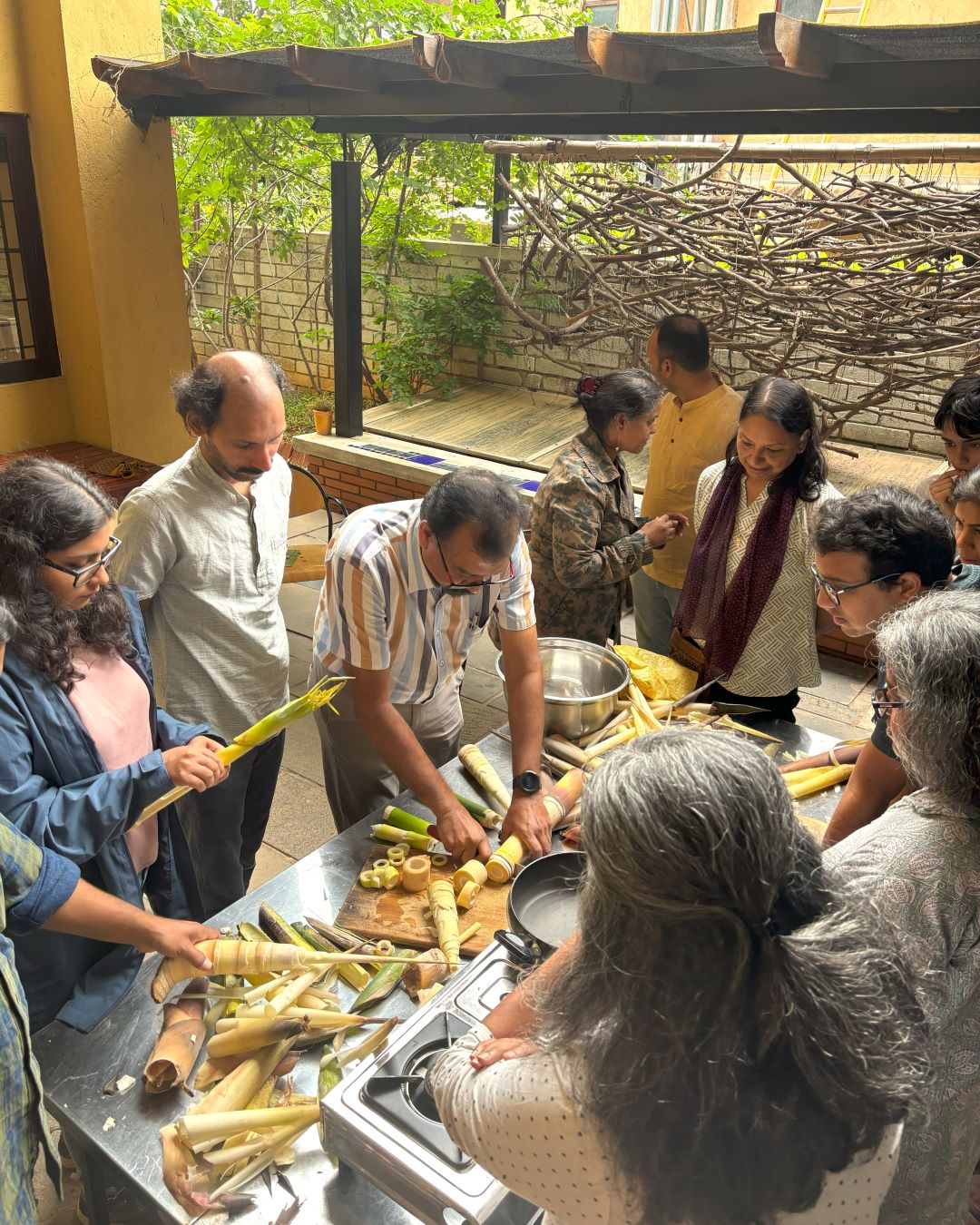
Which part of the bamboo can be eaten? One of the reasons this event was held in July was because fresh shoots that could be harvested for food are only available in this season. The value of eating seasonal and hyperlocal, was the motivation for this exploration. The fact that bamboo shoots are an excellent source of fiber and nutrition, was a second.
Our research led to a few learnings: bamboo shoot is always combined with a protein, or its eaten pickled to aid digestion. Any meat can be used for protein, while vegetarian options for protein are green gram and paneer. We made many dishes, from cutlets, soups, and curries, and realised bamboo evokes a dramatic response — people love it or hate it.
Curious to know more… here are some links for your exploration
Bamboo Feast : Stories and Food.

Clive and Eva run Mei Mei Kitchen in Ejipura, Bangalore. It is a small eatery serving traditional Khasi food, along with more popular Indian-Chinese fare. Clive is a chef and Eva also manages a salon apart from the restaurant.
They have moved from Meghalaya to Bangalore, in search of better opportunities. In a competitive market, they felt catering to the small but growing community of young people from the North East might be a good starting point while also opening up the palate of others who might be interested. Mei Mei – means mother, so sharing their home and stories with others was also one of their motivations for starting the place.
The menu was designed to present authentic flavours appealing to the uninitiated. With each course, Benson Isaac wove stories from Clive and Eva, to unpack what bamboo meant for lives, economies, and social structures.
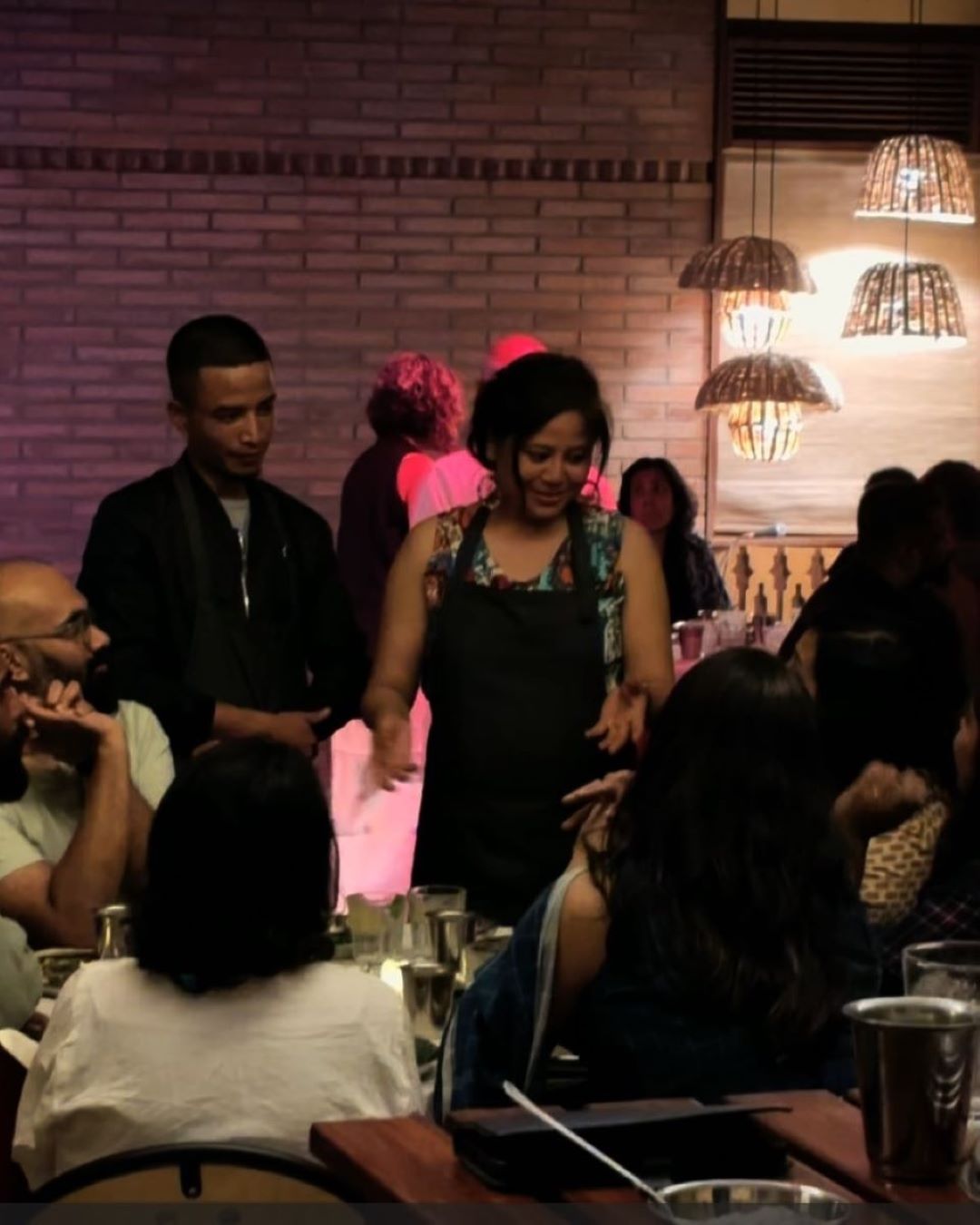
Menu
Starter : Phan, Tungtap & Greens, Bamboo Shoot cutlets.
Main Course : Jastem with Pork and Bamboo shoot curry, fermented fish. Pumpkin and Bamboo shoot curry, Bamboo shoot thoren.
Dessert: Black rice pudding.
Curious to know more… here are some links for your exploration
Workshop : Play with Bamboo

Rajeev Wind conducted a workshop with 20 participants to understand bamboo and to imagine possibilities, and create. Over more than five hours, the participants engaged with the brief, with some creating with great focus, and others exploring what could be that elusive ‘it’ they wanted to make. The joy of working with one’s hands was unmatched, and the material inspired everyone to keep playing with endless possibilities.

Curious to know more… here are some links for your exploration
Rajeev Wind
work
Mint Lounge
Homegrown
Bamboo Sahi Hai
Music : Bamboo Rhythms with Vayali.
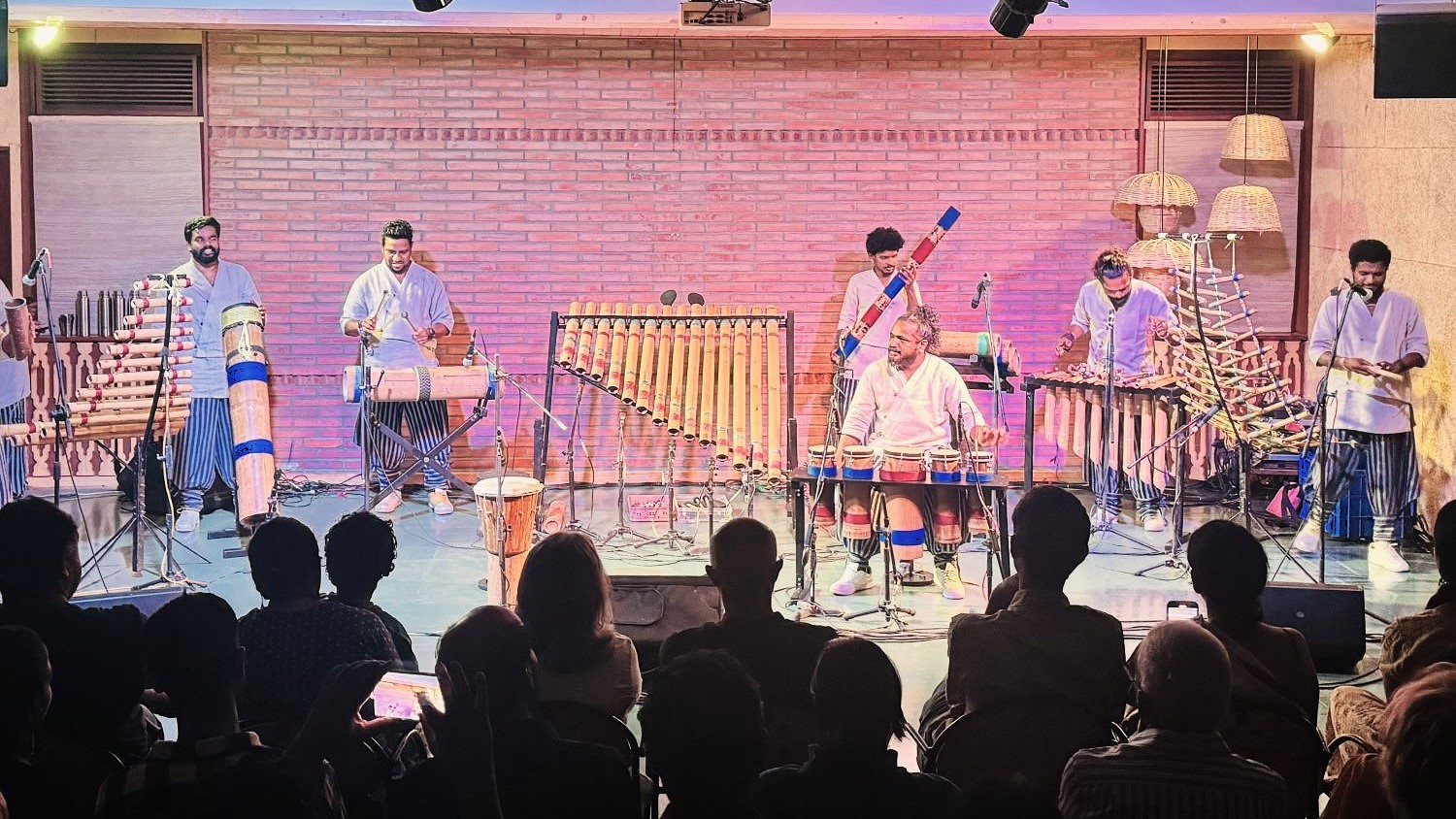
Vayali, a band that plays entirely with bamboo instruments entranced the crowds with their energetic performance. Various instrument for percussion, one that imitates a xylophone, a rain stick, djembe, and a flute are part of their repertoire. Their songs, inspired by nature and the sounds around them, transported the audience to a magical place. When they played popular songs, it felt like meeting old friends anew. The energy of the band was electrifying and each and everyone became a part of it, with the crowd on their feet and moving to the beats of the boat song and other popular songs.
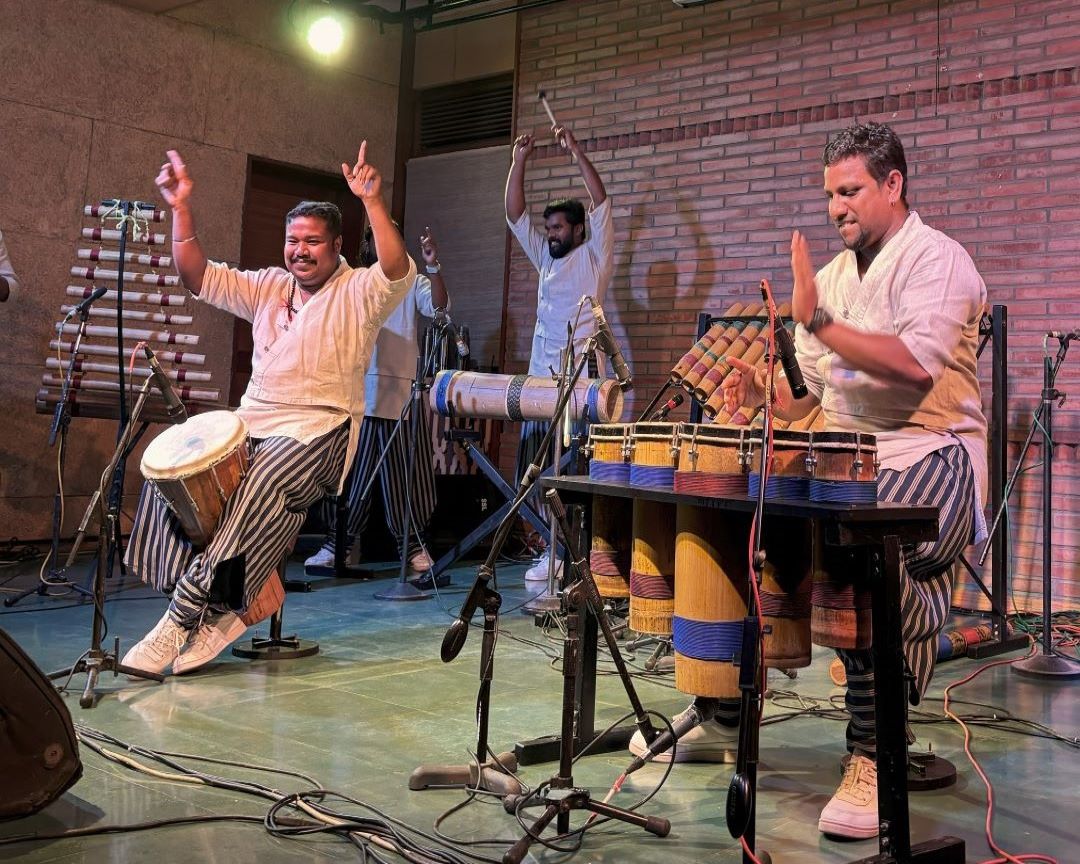
Curious to know more… here are some links for your exploration
Reflections

Just as a flute bends air and makes different kinds of music, during the course of ‘Bamboo Groove’, we discovered how questions around art, craft, politics, economics, and environment were shaped in different ways by the meanings bamboo presented. Some questions we are left grappling with:
Is ‘art and craft’, a worn phrase, about decorative items and aesthetic choices, or is it about tradition and roots, or is it about romantic ideas of a non-existent past?
When it comes to sustainability, do we have a meaningful response to the scale at which this issue looms over us, or do we only have tokenism – small gestures that perhaps feels good, but do not even scratch the surface of the planetary crisis we face?
Who decides what is a viable and meaningful livelihood choice for vulnerable populations?
For us at Courtyard Koota, these questions have created a space of fertile discomfort. We hope to push our own learning, actions, and our community’s engagement with these prickly thoughts through the arts. If you feel inspired by these questions and provocations, and have an idea that you would like to see take shape, please do not hesitate to reach out. We would love to bring alive different ideas together. Reach out at: meet@courtyardkoota.com
Acknowledgements
As with any creative and artistic endeavour, it takes a village to make dreams come true. At Courtyard Koota, we are blessed to be part of a vibrant and active community, and we are grateful for everyone’s energetic, thoughtful, and sustained support. We wish to thank Samagata Foundation, a non-profit organisation that supports projects and ideas that bring value to society. We wish to thank all the artists, scholars, practitioners, and participants who made Bamboo Groove a fabulous experience for everyone. Our special thanks to:
Syam Vishwanath
Rajeev Wind
Benson Isaac
CS Susanth
and of course, Team Koota.



